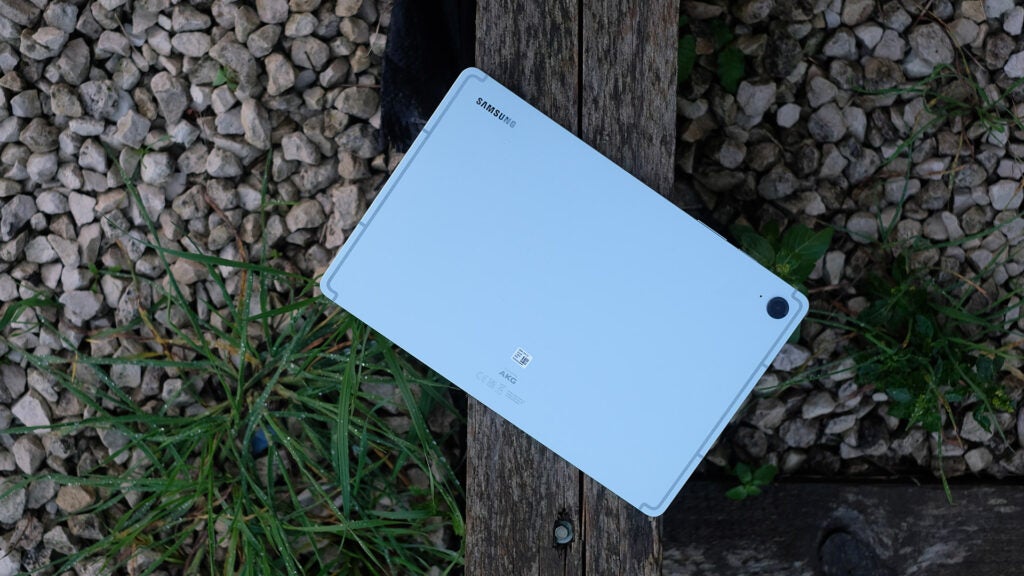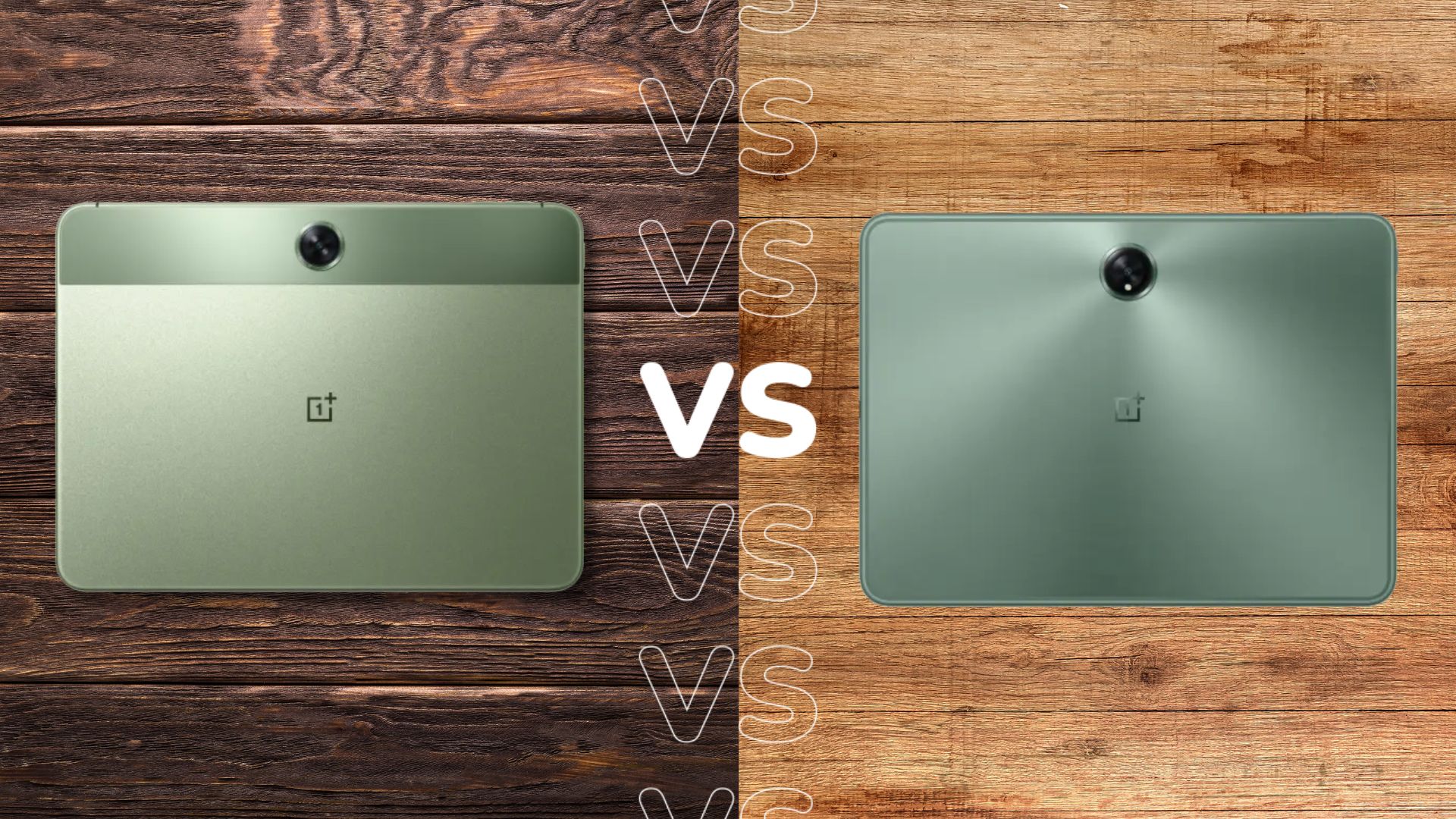Lenovo Legion Tab vs Samsung Galaxy Tab S9 FE: Which should you buy?

After spending some time as a China exclusive, Lenovo’s gaming-focused Legion Tab is headed to the UK and Europe. But how does it compare to Samsung’s mid-range Galaxy Tab S9 FE?
While both are focused on a similar segment of the market, there are plenty of differences between them that could push you one way or the other. The Galaxy Tab S9 FE, for example, sports a larger display, but the Legion Tab’s smaller screen is not only higher resolution but also faster.
The Galaxy Tab S9 FE also features a bundled stylus for doodling – something not offered by Lenovo’s game-ready alternative.
While we’ve not spent any time with the Lenovo Legion Tab just yet, we have spent a lot of time with the Samsung Galaxy Tab S9 FE. For now, here’s how the two compare on paper.
The Lenovo Legion Tab has a more powerful processor
When it comes to the mid-range Android tablet world, sacrifices have to be made. Some manufacturers go all-in on screen tech, others on performance, and some on software, but none really offer the whole experience – that’s what top-end tablets are for.

That said, it’s clear that Lenovo’s focus for the Legion Tab is performance, and that means it features a pretty beefy processor in the form of the Snapdragon 8 Plus Gen 1. While it’s not the latest Snapdragon 8 Gen 3, it was the top-end chipset in the second half of 2022, so we’re expecting pretty solid gaming performance from the tablet.
That’s especially true when compared to the Samsung Galaxy Tab S9 FE, which is comparatively underpowered with the use of the mid-range Exynos 1380 chipset – the same as that of the £449 Samsung Galaxy A54 5G from early 2023. It’ll still deliver a solid everyday experience when scrolling through apps and watching video content, but it’s not quite up to the task of high-end 3D mobile gaming.
The Samsung Galaxy Tab S9 FE has a larger screen
The Samsung Galaxy Tab S9 FE stands out in the mid-range Android tablet market mainly due to its exceptional screen dimensions, measuring 10.9 inches.
It’s an IPS LCD display with a 90Hz refresh rate and a 1440 x 2304 resolution that delivers a pixel density of around 249ppi. Despite its LCD nature, we were pretty happy with the performance of the panel in our review. It certainly didn’t detract from gaming or watching movies on the tablet.

However, it does pale in comparison to the Lenovo Legion Tab’s screen, even if it isn’t quite as large at 8.8 inches.
Like the Samsung Galaxy Tab S9 FE, the Legion Tab has an IPS LCD display, but that’s where the similarities between the two end. Lenovo has focused heavily on the screen, offering not only a hugely boosted 144Hz refresh rate ideal for gaming but also elements like Dolby Vision and HDR10 support to further enhance the viewing experience.
It’s also higher resolution than the Galaxy Tab S9 FE at 1600 x 2560, equating to a more pixel-dense 343ppi screen. That essentially means that on-screen elements should look a little more crisp on the Legion Tab’s panel, but we’ll have to wait until we go hands-on to say for sure.
The Lenovo Legion Tab has a focus on gaming
While the Galaxy Tab S9 FE has the larger display of the two tablets, the Lenovo Legion Tab undoubtedly has a focus on gaming. That’s not obvious just by the inclusion of Lenovo’s game-focused Legion branding and the powerful Snapdragon 8 Plus Gen 1 chipset, but a swathe of gaming-specific hardware.
Within the chassis you’ll find an oversized vapour chamber to help sustain gameplay performance over longer sessions, and that also enables Lenovo’s Legion Coldfront: Vapour tuning tech. It essentially allows you to tune the tablet’s performance with a choice between Beast Mode, Balanced Mode and Energy Saving Mode.
There are also elements like the inclusion of two USB-C ports for ease of charging regardless of the orientation, with one supporting DisplayPort 1.4 to plug the tablet into a TV or supported monitor for some big-screen gaming, and there are plenty of gaming-focused software tweaks too.
The Legion Tab’s 144Hz refresh rate allows you to squeeze the very best out of the tablet and achieve a maximum of 144fps in supported mobile games too.
While the competing Galaxy Tab S9 FE will also provide a solid gaming experience with its large display, the Legion Tab looks like it has the edge here.
The Samsung Galaxy Tab S9 FE has a larger battery
With a larger screen and thus a larger chassis to pack tech into, the Samsung Galaxy Tab S9 FE has a much larger battery than the Lenovo Legion Tab.
More specifically, the Tab S9 FE sports an 8000mAh battery while the Legion Tab sports a 6550mAh cell. The catch here is that the Snapdragon 8 Plus Gen 1 within the Legion Tab is more battery efficient than the Exynos 1380 of the Tab S9 FE, which could balance things out a bit.

For reference, we found that the Tab S9 FE easily delivered 11 hours of video streaming during our testing. It’s possible that the Legion Tab could match this – depending on how much gaming you’re doing, of course – but we’ll have to wait to say for sure.
The good news is that, with identical 45W fast charging tech, both tablets should regain charge fairly rapidly. In the case of the Tab S9 FE, a full charge takes 1 hour 42 minutes, though with a smaller battery, we’d expect the Legion Tab to reach the 100% mark a little sooner.
The Lenovo Legion Tab is (slightly) cheaper
While Lenovo has yet to confirm UK pricing for the Legion Tab, it has confirmed that it will retail for €599 in Europe when it is released in March. Compared to the Samsung Galaxy Tab S9 FE’s EU price of €629, that’s a saving of €30.
For context, the Galaxy Tab S9 FE costs £389 in the UK and $449 in the US, and is available to buy right now.








